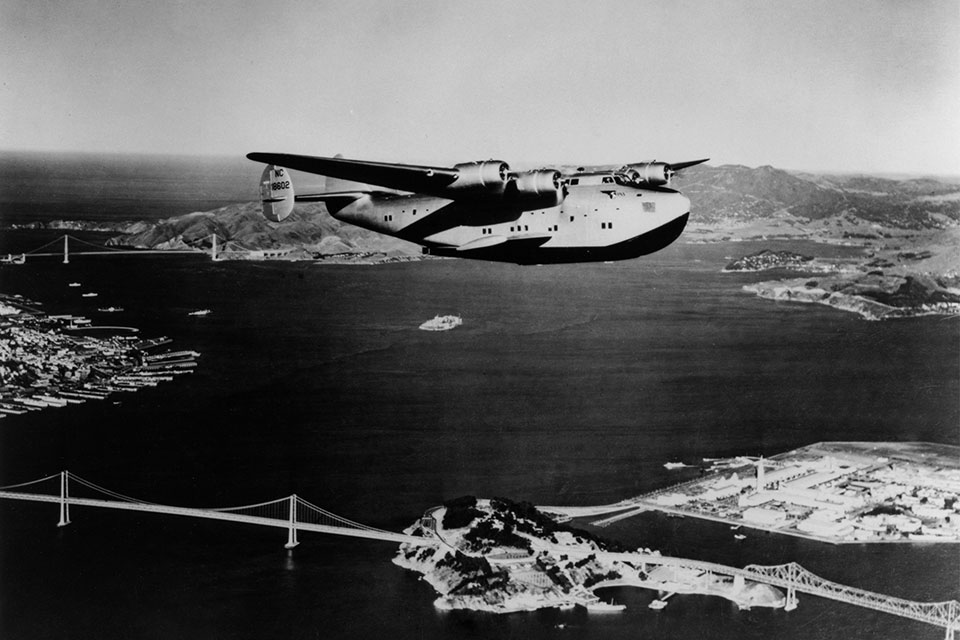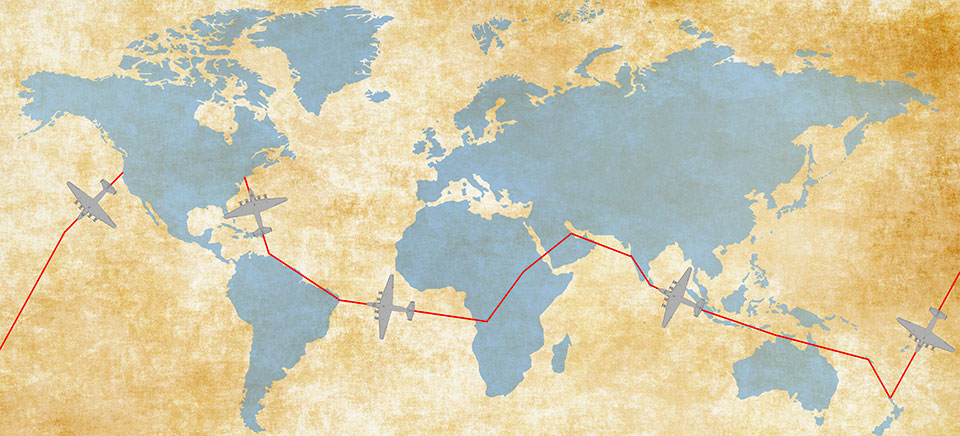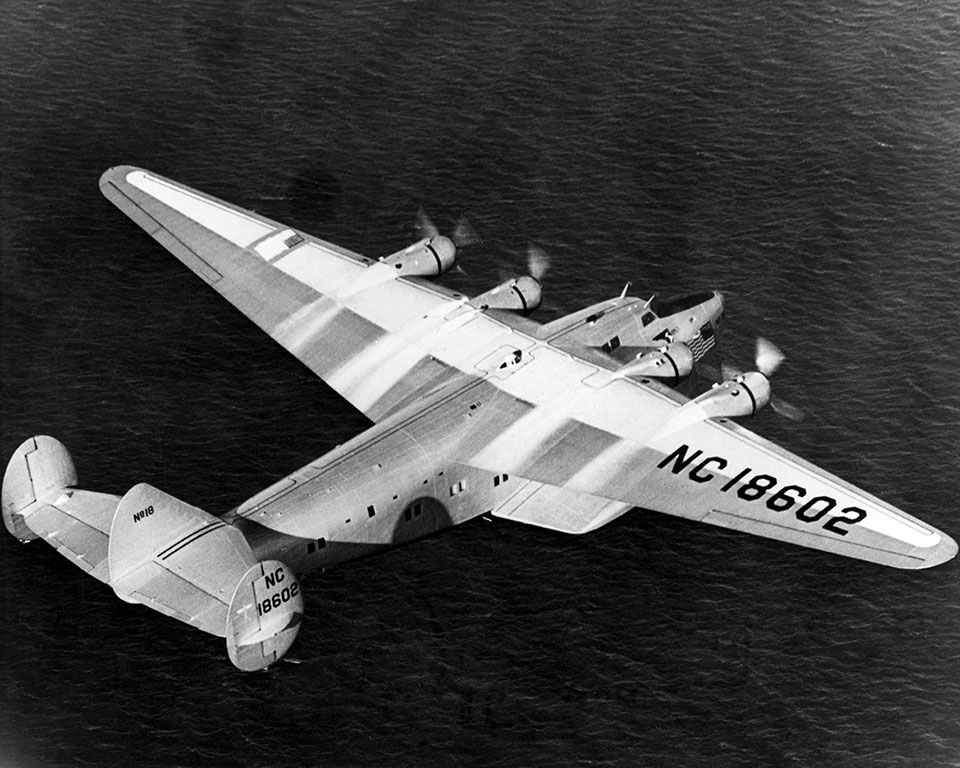No denying the Nile and the Congo
Clippers were designed to land on calm waters near populous seaports. The narrow banks, swift currents and debris of the Nile River posed dangers to the 84,000-pound (38,102-kilogram) aircraft with its 152-foot (46-meter) wingspan.
But the crew pressed on. Ford reached Leopoldville (now Kinshasa in Congo), docking at a rudimentary aircraft service facility on the Congo River.
After the crew had rested and the plane had been replenished, it was time to face two of the biggest obstacles of the journey home. First, the flying boat had to get in the air quickly to avoid nearby rapids and waterfalls in the Congo River. Next would come the nonstop, 20-hour, 3,583-mile (5,766-kilometer) flight across the Atlantic to Natal, Brazil.
Following that, the crew would stop at Port of Spain, Trinidad, before making the final leg of the flight to New York.
Unannounced arrival
In the early morning hours of Jan. 6, 1942, the radio operator at LaGuardia Airport received the following message: “Pan Am Pacific Clipper, inbound from Auckland, New Zealand. Ford reporting. Due arrive Marine Air Terminal LaGuardia seven minutes.”
There was nothing on the day’s manifest about this flight, so the unexplained transmission created confusion and concern. The Clipper circled the airport for an hour waiting for permission to land.
The final landing at LaGuardia marked the completion of the 37-day, 18-stop, 31,500-mile (50,694-kilometer) west-to-east flight from San Francisco and New Zealand to New York. The Clipper had flown for nearly 210 hours, crossed the equator four times, flown over five continents and three oceans, and stopped in 12 nations.
Upon landing, Pan Am transferred the crew to the airline’s Atlantic division, prohibiting their return to San Francisco and preventing a full circumnavigation of the globe. Regardless, more than 80 years later, the record still stands as the longest commercial flight by mileage.


